Until we change systemic health care issues in remote communities and prioritise culturally safe health care, Indigenous children and young adults will continue to die from preventable heart disease, experts say.
A systematic review published in First Nations Health and Wellbeing – The Lowitja Journal highlighted the effectiveness of prevention programs to prevent, reduce and control acute rheumatic fever (ARF) and rheumatic heart disease (RHD).
It found that programs that were Indigenous-led and community-based offered a better chance of preventing and eliminating ARF and RHD.
As lead author of the review, Ms Lorelle Holland, from UQ’s Child Health Research Centre told InSight+, no one is more invested in their community than community members.
“Local Aboriginal health practitioners wear the burden of health disparities in the community. When you empower that person, they are more likely to be well engaged and help lead necessary community health programs to achieve sustainable and beneficial change,” she said.
Rheumatic heart disease: a preventable but persistent burden
RHD remains a significant global health issue, with over 40.5 million cases worldwide.
It begins as a Streptococcus A (Strep A) infection of the throat (pharyngitis) or skin (impetigo), usually in children aged 5 – 14 years. If untreated or it recurs, it can lead to an autoimmune response called acute rheumatic fever (ARF). If it causes damage to the heart and valves, it causes RHD and can lead to complications such as endocarditis, heart failure and stroke.
In Australia, the latest statistics from December 2023 show there were 11 136 people on the RHD registers living with ARF and/or RHD in New South Wales, Queensland, Western Australia, South Australia, and the Northern Territory.
Most of these diagnoses were Aboriginal and Torres Strait Islander people.
There are three tiers of primary health care strategies to prevent RHD.
- Primordial prevention: Address social determinants of health such as not enough hygiene facilities and poor housing conditions to limit the transmission of Strep A.
- Primary prevention: Regular screening and treatment of Strep A infections.
- Secondary prevention: Prophylactic penicillin injections to reduce the recurrence of ARF and further progression to RHD.
The Lowitja Journal findings
The review analysed eleven peer-reviewed articles that examined clinic, community and school-based programs.
They looked at:
1. How effective are the available programs in preventing acute rheumatic fever and rheumatic heart disease in Aboriginal and Torres Strait Islander communities in Australia?
2.How culturally responsive are the available prevention programs?
The authors found that the programs that took a strict biomedical approach failed to address the rates of ARF and RHD.
“(You need to) go in with the acknowledgement of accepting the local people’s knowledge,” Ms Holland said.
“The fly in, fly out managers who think they’re not visitors to community. Who come in dominant, instilling ‘outsider’ control of health clinics. They come in not realising that if someone dies in community, that local people are going to be collectively quite impacted,” she said.
The authors found that when there was greater community ownership and collaborative interdisciplinary partnerships with Indigenous communities, it resulted in more successful RHD elimination efforts.
More local involvement backs up a blueprint that was published in the MJA. The National Aboriginal Community Controlled Health Organisation (NACCHO) highlighted that Indigenous ownership is one of the key elements of eliminating RHD.
As part of this priority, funding has been provided to expand local capacity for ARF and RHD activities and there are now 29 Aboriginal Community Controlled Health Organisations (ACCHOs) participating in this program, up from 15 ACCHOs a year ago.
“This new approach, of interest to many who seek to work more effectively in advancing the health and wellbeing of Aboriginal and Torres Strait Islander peoples, shifts power and decision making to community control. This is sovereignty in action,” Ms Pat Turner, NACCHO’s CEO, and Dr Dawn Casey, NACCHO’s Deputy CEO wrote in an MJA perspective in 2024.
More compassion and better care
Ms Holland also questioned why more can’t be done to prevent RHD rather than monthly penicillin vaccinations.
The review highlighted: “Acute rheumatic fever and RHD are potent markers of social disadvantage and health disparity driven by inequitable access to wealth and health care compounded by the continued negative impacts of colonisation, systemic failures and injustice experienced by Indigenous peoples.”
During the global COVID-19 pandemic, there was intense global action to find a vaccine to stem morbidity and premature mortality.
As the authors wrote in the review: “RHD is pronounced as a disease of poverty and social and health inequity but has not received the same urgent investment.”
“Can you imagine white urban Australian children lining up for monthly penicillin injections? I don’t think so. It’s archaic. Why aren’t we putting the same intensity (as COVID-19) into the vaccination process and funding that?” Ms Holland questioned.
Ultimately, there needs to be a more compassionate approach from all.
“I think it comes back to how do you infuse compassion? Because I think if it was there, a lot of these issues wouldn’t be existing,” she said.
“To me, it’s all about health equity. Really the bottom line its working together collectively to gain awareness and see the issue. I do believe Australia is a compassionate society, but maybe not aware. I think if they were more aware, you would get more people being outraged and working better together to find solutions,” she concluded.
Subscribe to the free InSight+ weekly newsletter here. It is available to all readers, not just registered medical practitioners.

 more_vert
more_vert
The controversial Royal Commission into Aboriginal Deaths in Custody called for the engagement of Indigenous peoples in decision-making regarding the assessment of needs and the delivery of health services to Aboriginal people, and pointed to the benefits of health services for Indigenous peoples provided by Indigenous peoples themselves (Recommendation 254). As the Commission proffered, Aboriginal community controlled health services should be resourced to meet not only the provision of medical and nursing care, but also the promotion of good health, the prevention of disease, environmental improvement and the improvement of social welfare services for Aboriginal people (Recommendation 259). To this extent, we must consider the awful situation with rheumatic heart disease (RHD). I, as a non-Indigenous Australian, sincerely hope that RHD among this country’s First nations people will be combatted and defeated by the work of Indigenous peoples. In the meantime, it is to be hoped that governments recognize the important contribution that Aboriginal Controlled Community Health Organizations (ACCHOs) can make. In the past it was always the case that government bureaucrats and their appointed advisers saw themselves as the experts in Aboriginal health, while diminishing and devaluing the expertise of Aboriginal people.
ACCHOs had pioneered the development of health services that were strongly engaged with their communities well before the development of the original Closing the Gap strategy and, nowadays, continue to increase access to a broad range of primary health care services and to advocate on behalf of their communities around the broader determinants of health. It needs reminding that ACCHOs, if not Aboriginal Controlled Community Health Service (ACCHSs) are multifunctional community organizations seeking to follow an integrated primary health care model, with a philosophical approach of community control, cultural appropriateness of services and a holistic view of health as their foundation. Consequently, we can therefore appreciate the role that ACCHSs can play in the Closing the Gap Refresh strategy and, for that matter, in defeating RHD.
Services that are culturally right and appropriate give ‘agency’ to Indigenous Australians. Of course, many arguments exist that the Western biomedical approach may not be the best approach. That said, Indigenous Australians will need to adopt modern healthcare technologies together with aspects of traditional Indigenous health culture. Of course, we need not ignore the fact that all the World’s cultures have a system of health beliefs to explain illness causation, how it can be cured or treated, and who should be involved in the process. For instance, the degree to which patients perceive patient education as having cultural relevance for them can strongly affect their reception to information provided and their willingness to use it. Think here of health education and health promotion as applied in regard to RHD. Indeed, think too of treatment strategies. Culture, history, racism, socioeconomic disadvantage, and the psychological distress associated with some of these factors no doubt affect attitudes to health status in a complex manner. Strong social connections to family and kin that is intensified by cultural obligations, appear to affirm and disrupt positive health behaviour. Here I can think of RHD treatment compliance.
The current effort in addressing RHD among Australia’s First Nations people, namely the RHD Endgame Strategy, must have an evaluation arm if it is to be successful. Ongoing evaluation and review should inform ‘best practice’ initiatives in health promotion and treatment modalities to reduce the RHD illness burden. The issues about governance, effectiveness, and continuous quality improvement need to be included in this evaluative arm. In this regard, NACCHO has to come to the aid of the party. NACCHO also has to think hard why past national efforts to defeat RHD did not achieve the success hoped for. And, whilst Aboriginal led and controlled efforts in defeating RHD are desirable and point to cultural distinctiveness, there will be a need, at times, for Indigenous workers to intersect with non-Indigenous stakeholders (e.g. RHD reporting, finance, capital works). Here there remains the difficulties and challenges created by the intersection of the values of both the Indigenous and non-Indigenous cultures in the Australian setting. This dynamic must not be confounded by the oppressive history of marginalization, ‘Protectionist’ policies and racism suffered by Indigenous peoples. That said, non-Indigenous enablers have to appreciate and encourage the Indigenous community coalition driven efforts to improve on RHD. Those responsible in government, if not those in Canberra, must appreciate that Indigenous efforts in tackling RHD are sound and empower Indigenous communities. Such an appreciation will be garnished if the evaluation of RHD programmes are also sound.
The task in tackling RHD by Indigenous led and controlled efforts has to include accessible health services; community participation; a culturally appropriate and skilled workforce, flexible approaches to care, and ’self-determination’ and empowerment. If communities and governments are genuinely serious about closing the gaps in life expectancy and morbidity between Indigenous and non-Indigenous peoples, then it is essential that primary health care services be allowed to continue and supported. Sufficient funds need to be dispersed from government coffers if Indigenous Australians are to tackle RHD effectively and appropriately across the Indigenous community especially ‘on country’ and in the ‘homelands’.
Caitlin Wright’s passion for her topic shines through and is very much appreciated.